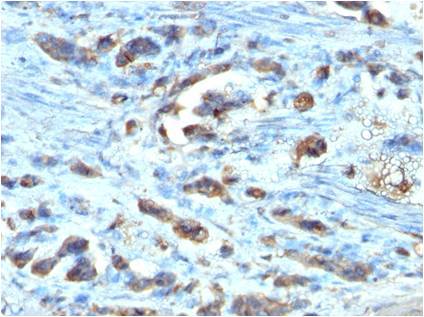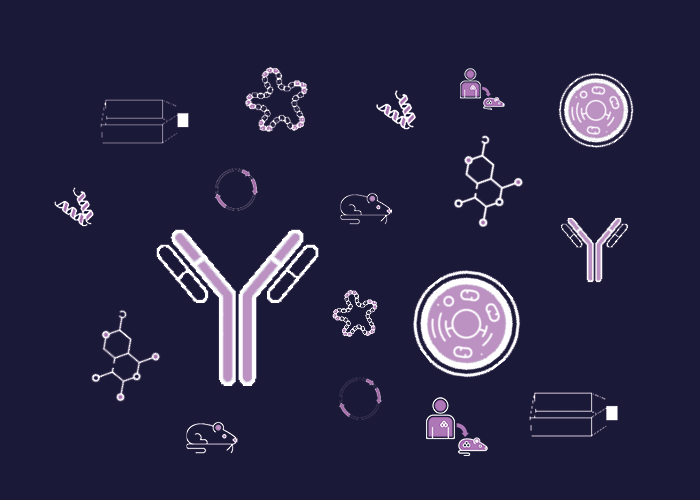Cat. #151310
Anti-Cdc20 [AR12.4]
Cat. #: 151310
Sub-type: Primary antibody
Unit size: 100 ug
Availability: 3-4 weeks
Target: Cell division cycle protein 20 (cdc20)
Class: Monoclonal
Application: FACS ; IHC ; IF ; IP
Reactivity: Human
Host: Mouse
£300.00
This fee is applicable only for non-profit organisations. If you are a for-profit organisation or a researcher working on commercially-sponsored academic research, you will need to contact our licensing team for a commercial use license.
Contributor
Institute: European Institute of Oncology
Tool Details
*FOR RESEARCH USE ONLY (for other uses, please contact the licensing team)
- Name: Anti-Cdc20 [AR12.4]
- Alternate name: Fizzy protein, CDC2, CDC2A, p55CDC, P55CDC-LSBHuman Entrez Gene ID 991 Human SwissProt Q12834 Human Unigene 524947 Human Gene Symbol CDC2Human Chromosome Location 1p34.2
- Research fields: Biochemistry;Cell biology
- Clone: AR12.4
- Tool sub type: Primary antibody
- Class: Monoclonal
- Conjugation: Unconjugated
- Molecular weight: 55 kDa
- Strain: Balb/c
- Reactivity: Human
- Host: Mouse
- Application: FACS ; IHC ; IF ; IP
- Description: Cdc20 (fizzy protein) exhibits protein kinase activity in vitro and exists in a complex with both cyclin B and a protein homologous to p13SUC1. Cdc2 kinase is the active subunit of the M phase promoting factor (MPF) and the M phase-specific Histone H1 kinase. The p34Cdc2/cyclin B complex is required for the G2 to M transition. An additional cell cycle-dependent protein kinase, termed p55cdc, exhibits a high degree of homology with the S. cerevisiae proteins Cdc20 and Cdc4. The p55cdc transcript is readily detectable in a variety of cultured cell lines in growth phase, but disappears when cell growth is chemically arrested.
- Immunogen: Urea-denatured His6 human Cdc20 recombinant protein
- Isotype: IgG1 kappa
- Myeloma used: P3X63Ag8.653
- Recommended controls: Ramos or HeLa cells. Tonsil or gastric carcinoma.
Target Details
- Target: Cell division cycle protein 20 (cdc20)
- Molecular weight: 55 kDa
- Tissue cell line specificity: Ramos or HeLa cells. Tonsil or gastric carcinoma.
- Target background: Cdc20 (fizzy protein) exhibits protein kinase activity in vitro and exists in a complex with both cyclin B and a protein homologous to p13SUC1. Cdc2 kinase is the active subunit of the M phase promoting factor (MPF) and the M phase-specific Histone H1 kinase. The p34Cdc2/cyclin B complex is required for the G2 to M transition. An additional cell cycle-dependent protein kinase, termed p55cdc, exhibits a high degree of homology with the S. cerevisiae proteins Cdc20 and Cdc4. The p55cdc transcript is readily detectable in a variety of cultured cell lines in growth phase, but disappears when cell growth is chemically arrested.
Applications
- Application: FACS ; IHC ; IF ; IP
Handling
- Format: Liquid
- Concentration: 1 mg/ml
- Unit size: 100 ug
- Storage buffer: PBS with 0.02% azide
- Storage conditions: -15° C to -25° C
- Shipping conditions: Dry ice
References
- Sironi et al. 2001. EMBO J. 20(22):6371-82. PMID: 11707408.
- Mad2 binding to Mad1 and Cdc20, rather than oligomerization, is required for the spindle checkpoint.




